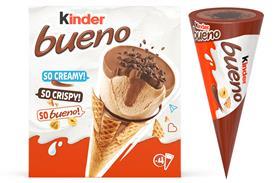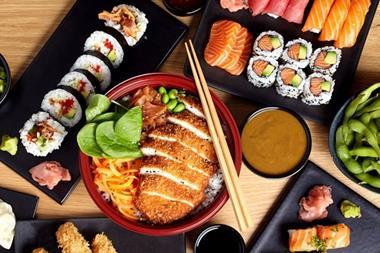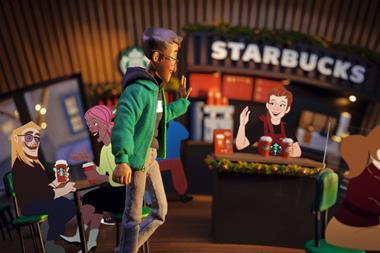Footfall is lower than in other parts of the store. The problem of defrosting before reaching home places the category at the end of the shop. This affects sales because shoppers may have bought alternative products before reaching frozen desserts or it may prevent them going down the aisle at all.
We observed 487 shoppers across the multiples. Of those that went down the aisle 69% of shoppers did not shop the category. The low level of noting behaviour (17%) indicates the category does not make an impression on the passing footfall. When interviewed, many of these passers-by' found the products acceptable. In other words, there is a market not interacting with the category that could be persuaded to shop and buy.
The problem is awareness. Frozen desserts suffers from a lack of visibility and identity.
A total of 58% of shoppers had intended to buy from the category. But the number postponing purchase after shopping the category was 48%. This is huge compared with other grocery categories.
The vast majority bought own label. Just over one-third always buys the same product/ brand while 50% was motivated by special offers.
Manufacturers need to research the decision-making process. The first decision is do I like it?' or do I want to try it?' No amount of promotion can sell it if it is not liked.
The type of product offer is therefore important. Visuality believes the current range is not quite right.
Frozen desserts may be over-populist, always looking for commonality in tastes for the majority rather than looking for minority taste for the few. This makes sense from a manufacturer's point of view but shoppers often want something different', not the same old thing'. Purchase was postponed because there was often nothing they fancied.
Cabinet freezers are often used because they are modern, the product should be more visible and shoppers shouldn't have to bend over. However, products are less visible as packs are merchandised flat (side-of-pack-to-shoppers) while products displayed upright fall-over once stocks get low.
In one instance, an own label cheesecake, which only had graphics on the front of the pack, was displayed side-on. All the shoppers saw was a blank display of cardboard.
Standard chest freezers do not have doors and shoppers interact with product more freely than in cabinet freezers. Chest freezers seem to encourage more and quicker involvement with the category.
Seasonality was another issue. Shoppers expected a far greater choice of low fat or healthy options in January. Some retailers did react to this but the majority did not, and shoppers decided not to buy.
Frozen desserts is an over promoted category and some retailers use it to create footfall. Many deal-seekers do not add value to store or frozen desserts sales. The value deal-seekers add needs to be measured as they can prevent other shoppers from having the range and choice they want simply by distracting appropriate investment.
{{INSIGHT }}
We observed 487 shoppers across the multiples. Of those that went down the aisle 69% of shoppers did not shop the category. The low level of noting behaviour (17%) indicates the category does not make an impression on the passing footfall. When interviewed, many of these passers-by' found the products acceptable. In other words, there is a market not interacting with the category that could be persuaded to shop and buy.
The problem is awareness. Frozen desserts suffers from a lack of visibility and identity.
A total of 58% of shoppers had intended to buy from the category. But the number postponing purchase after shopping the category was 48%. This is huge compared with other grocery categories.
The vast majority bought own label. Just over one-third always buys the same product/ brand while 50% was motivated by special offers.
Manufacturers need to research the decision-making process. The first decision is do I like it?' or do I want to try it?' No amount of promotion can sell it if it is not liked.
The type of product offer is therefore important. Visuality believes the current range is not quite right.
Frozen desserts may be over-populist, always looking for commonality in tastes for the majority rather than looking for minority taste for the few. This makes sense from a manufacturer's point of view but shoppers often want something different', not the same old thing'. Purchase was postponed because there was often nothing they fancied.
Cabinet freezers are often used because they are modern, the product should be more visible and shoppers shouldn't have to bend over. However, products are less visible as packs are merchandised flat (side-of-pack-to-shoppers) while products displayed upright fall-over once stocks get low.
In one instance, an own label cheesecake, which only had graphics on the front of the pack, was displayed side-on. All the shoppers saw was a blank display of cardboard.
Standard chest freezers do not have doors and shoppers interact with product more freely than in cabinet freezers. Chest freezers seem to encourage more and quicker involvement with the category.
Seasonality was another issue. Shoppers expected a far greater choice of low fat or healthy options in January. Some retailers did react to this but the majority did not, and shoppers decided not to buy.
Frozen desserts is an over promoted category and some retailers use it to create footfall. Many deal-seekers do not add value to store or frozen desserts sales. The value deal-seekers add needs to be measured as they can prevent other shoppers from having the range and choice they want simply by distracting appropriate investment.
{{INSIGHT }}
















No comments yet